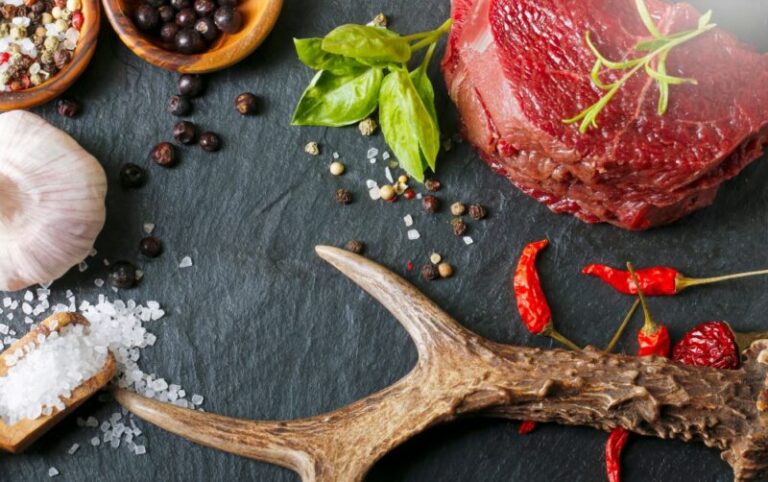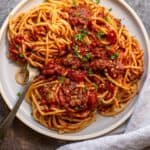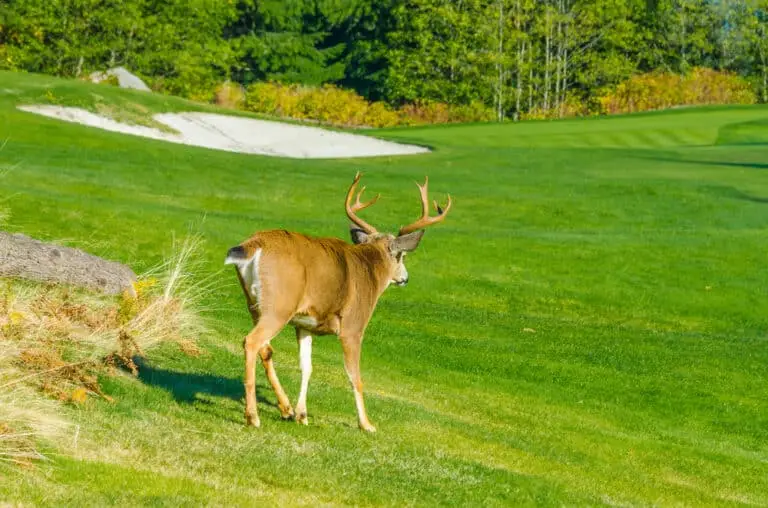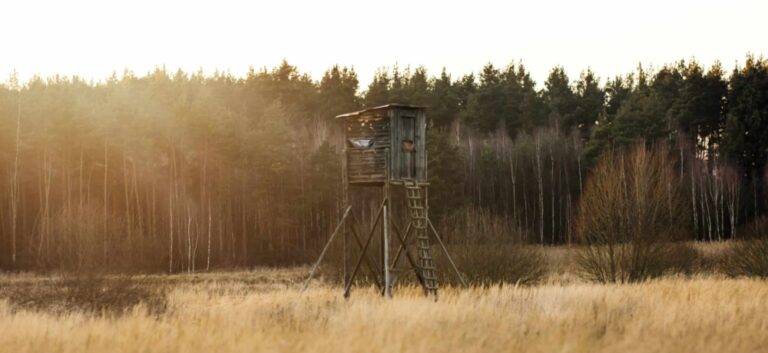Venison, known as deer meat, has been a source of nutrition and sustenance for hunters since antiquity. Not only does it provide an excellent source of protein, but its low-calorie content also makes it a healthy alternative to traditional meats like chicken breast.

This comprehensive guide for dear hunters will delve into the nutritional benefits of eating deer meat and explore various culinary uses, including tenderizing processes and grounding techniques. We’ll also discuss effective preservation methods such as canning and freezing good venison.
Safety is paramount when hunting whitetail deer or any other species. Therefore, we will cover safe field dressing techniques during hunting along with essential precautions during the deer hunting season. Additionally, you’ll learn about the Chronic Wasting Disease (CWD) risk associated with consuming dead deer without proper testing.
We understand the essential hygiene standards in processing and storing games, so we have included sections on maintaining hygiene while handling frozen venison. We’ve included a few recipes below to water your taste buds.
The Nutritional Benefits of Deer Meat
Regarding lean, low-fat protein sources, deer meat or venison, as commonly known, is a top contender. It offers fewer calories than other types of meat, and its nutritional profile makes it an excellent choice for those with cardiovascular disease.
Low-Calorie Content in Venison
Compared to beef and pork, venison has significantly fewer calories. So, enjoy your meal without worrying about exceeding your daily caloric intake.
High Protein Source from Deer Meat
Venison is also a high-protein option, vital in building and repairing body tissues. In fact, according to the USDA National Agricultural Library, one serving of cooked deer meat provides about 30 grams of this essential nutrient.
Cardiovascular Advantages
Besides being low-calorie and high-protein, venison is rich in heart-healthy nutrients like omega-3 fatty acids. These little wonders have anti-inflammatory properties and can help reduce blood pressure levels. Additionally, lean meats like whitetail deer can help maintain healthy cholesterol levels, promoting cardiovascular health.
Incorporating deer meat into your meal plan can bring a distinct flavor and numerous health advantages. Remember, moderation is key to enjoying these benefits without compromising a balanced diet. Putting deer back into your diet is always a good thing.
Culinary Uses of Deer Meat
Deer meat, or venison, is a versatile delight in the kitchen. It can be transformed into a variety of dishes that are not only delicious but also packed with nutritional benefits.
Tenderizing Process for Venison
To cook venison, tenderization is critical. Because it’s leaner than other meats, venison can sometimes be tricky. Marinate with acidic elements such as vinegar or lemon juice, beat with a mallet, or simmer at low temperatures to tenderize venison.
Ground deer meat opens up a world of culinary possibilities. The options are endless, from burgers and sausages to chili and pasta sauces. Debone the meat and run it through a grinder to achieve consistency.
Preserving Methods: Canning & Freezing
If you have an excess of deer meat after hunting season, canning and freezing are two great methods for preserving it. You can preserve your bounty by freezing or canning it. Freezing keeps the fresh taste intact, while canning provides ready-to-eat meals without refrigeration, perfect for camping trips.
Check out this comprehensive guide from The Canning Granny.
Safe Field Dressing Techniques During Hunting
When pursuing deer, knowing how to manage your quarry safely is essential. Not only does this keep things clean, but it also helps avoid nasty stuff like Brucellosis from infected animal fluids.
Protective Measures While Hunting
After you make your kill, wear gloves and keep your hands away from your face. Wash up after field dressing, and clean your gear ASAP. Make sure you get the deer back to the house.
Safely Feeding Dogs Raw Deer Meat
If your pets love raw meaty bones, be careful. Please don’t give them parts that might be contaminated with diseases like Brucellosis or Canine Parvovirus. Stick to clean muscle tissue instead.
Hunting is a thrilling sport with traditions and tasty rewards. But remember: Safety first for you, others, and your furry friends. Also, watch for other deer hunters, as safety is paramount.
Risk of Chronic Wasting Disease (CWD) from Deer Meat?
If you’re a hunter, watch out for the deer disease called Chronic Wasting Disease (CWD). It’s like a bad case of deer cooties.
Importance of Testing Kills Before Chowing Down
Humans getting CWD from eating deer isn’t proven yet, but it’s better to be safe than sorry. Get your skills tested for free or cheap in many states. Don’t eat any meat that tests positive for CWD.
Reducing CWD Risks Like a Pro
- Avoid the Nasty Bits: Avoid the brain and spinal cord, where the CWD cooties like to hang out.
- Bone Out the Meat: Remove all the bones ASAP after killing the deer. No bones, no problem.
- Cook It Up: Cooking won’t kill the CWD cooties, but it’ll take care of other germs that might be lurking.
Remember to wear gloves and wash your hands after handling your kill. Clean your hunting tools with bleach to be extra safe. And don’t be a jerk – only shoot healthy-looking deer, not the sickly ones.
Precautions To Take During Deer Hunting Season
The arrival of autumn is an exciting time for hunters, but safety should always be the top priority. Don’t bring home any deer that looks like it’s auditioning for a zombie movie. Recent studies have shown that white-tailed deer can catch the coronavirus, so avoiding close encounters with their lung tissues is best. And don’t even think about bringing home a road-kill dead deer.
Identifying Healthy Deer for the Kill
Deer Hunters: When choosing your target, go for the ones with shiny coats, clear eyes, and a knack for agility. It is best to contact the relevant wildlife authorities if you encounter a deer exhibiting lethargic behavior and unresponsiveness.
The Centers for Disease Control (CDC) provides guidelines on how hunters can protect themselves during hunting season. They recommend wearing gloves when handling animals and washing hands thoroughly afterward. Safety first, folks.
Remember, let’s show some respect for nature and practice sustainable hunting. We want future generations to enjoy the same rewarding experiences we do today. Happy hunting.
Hygiene Standards in Processing and Storing Deer Meat
The hunt is over, but the battle for cleanliness has just begun. Keep your deer meat fresh and safe by following these hygiene standards from field to freezer.
Essential Tools for Maintaining Hygiene
A sharp, clean knife is your best friend in the wild. Make sure to have a dedicated hunting knife that’s as clean as a whistle.
When you bring your game home, don’t forget to clean your workspace. Disinfect surfaces and wash those hands before handling meat. Blood draining is a must to keep things fresh and bacteria-free.
- Cleanliness: Start with clean hands and equipment. There is no dirty business here.
- Cooling: Chill out the carcass ASAP to slow down bacterial growth—ice, ice, baby.
- Drying: Say no to wetness. Dry off excess moisture before freezing. Bacteria hate dry places.
Avoid cross-contamination like the plague. Keep raw venison away from other foods and wash those utensils immediately. We don’t want any unwanted guests at the dinner table.
All these steps lead to delicious cooking. Prepare those taste buds and enjoy the benefits of choosing venison as your protein source. Learn more about food safety guidelines here.
Utilizing Every Part Of Your Hunt
No matter the experience level, no part of a hunt should be wasted; every component can serve a purpose. Every part of your hunt can be utilized, from the venison steaks to the bones.
Making Homemade Broth From Leftover Bones
Don’t toss those deer bones. Turn them into homemade broth that’ll make your soups and stews extra tasty. Plus, it’s packed with minerals for a nutritious boost.
To get started, clean those bones and toss them into a pot of water. Add aromatics such as onions, carrots, and celery to the pot, and season with herbs like thyme or rosemary for extra flavor. Let it all simmer on low heat for hours until you’ve got a flavorful broth.
Check out this venison stock recipe for detailed instructions on making delicious broths from your deer bones at home.
Not ready to use it all up? No problem. Freeze the broth in ice cube trays for future use. That way, you’ll always have a taste of your hunting success on hand.
Using every part of your hunt, you maximize your yield and add deeper flavors to your dishes. It’s a win-win for your taste buds.
FAQs about Deer Meat
Is it healthy to eat venison?
Yes, deer meat, also known as venison, is a lean source of protein and contains essential nutrients like iron and vitamin B. It is still considered red meat, though.
What are the benefits of eating deer meat?
Deer meat offers numerous health benefits, including high protein, low-fat content, and a rich source of vitamins and minerals. It’s also great for heart health due to its low cholesterol levels. Learn more about the benefits of eating venison.
What is a fact about deer meat?
A surprising fact about deer meat is that it has fewer calories than even skinless chicken breast while providing an excellent source of protein despite being red meat.
Why isn’t deer meat popular?
The limited availability and unique flavor profile can make deer hunting less mainstream compared to other meats such as beef or chicken. But it is still recommended to eat venison.
What is deer meat called?
Venison
Deer Meat Conclusion
This blog post has highlighted the nutritional benefits of deer meat – it’s low in calories and high in protein, making it a healthy choice. We’ve also discussed various culinary uses of deer meat, like tenderizing techniques and grounding methods for different dishes – get creative in the kitchen!
Additionally, we explored safe field dressing techniques during hunting to ensure proper hygiene standards – no one wants a tummy ache!
Understanding the risks associated with Chronic Wasting Disease (CWD) was emphasized – stay informed and take precautions. Lastly, we touched on the importance of maintaining hygiene in processing and storing game – cleanliness is next to deliciousness!
Following these guidelines and tips, you can enjoy tasty and nutritious meals from deer meat while keeping yourself and others safe – bon appetit!








